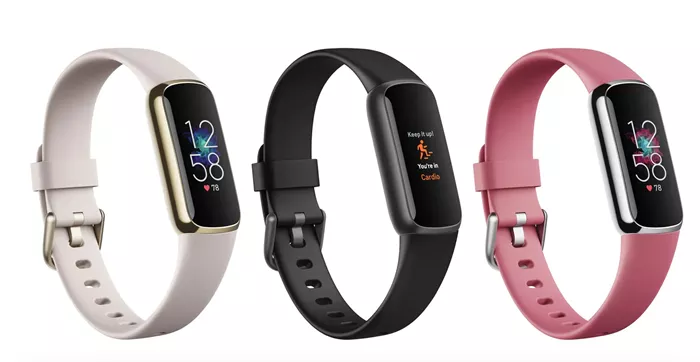In the realm of fitness technology, Fitbit has established itself as a leader with its range of activity trackers and smartwatches. These devices not only track steps and monitor sleep but also analyze heart rate data to enhance your understanding of your fitness levels. Among the most useful features are the heart rate zones—Fat Burn, Cardio, and Peak—each of which serves a specific purpose in a fitness regimen. This article will delve deep into what these terms mean, how they are calculated, and the benefits they offer for improving your health and fitness.
Fitbit’s Heart Rate Zones
Fitbit devices use heart rate data to categorize your physical activity into different zones. These zones are based on percentages of your maximum heart rate (MHR), a figure that represents the highest number of beats per minute your heart can reach during maximum physical exertion. Understanding these zones can help you tailor your workout intensity based on your fitness goals—whether it’s burning fat, improving cardiovascular health, or building endurance.
Calculating Your Maximum Heart Rate
The first step in understanding the heart rate zones is to determine your maximum heart rate. The most commonly used method to estimate MHR is by subtracting your age from 220. For instance, if you are 30 years old, your estimated MHR would be 190 beats per minute (220 – 30 = 190). Fitbit uses this calculation as a basis to set personalized heart rate zones for tracking your exercise intensity.
What Does “Fat Burn” Mean on Fitbit?
Fat Burn Zone: Low-Intensity Cardiovascular Exercise
The Fat Burn heart rate zone indicates a lower intensity cardio exercise where your heart rate is typically between 50% and 69% of your MHR. At this level, your body’s primary energy source is fat, hence the name “Fat Burn.” This zone is particularly beneficial for those who are just starting their fitness journey or are engaging in a longer-duration workout.
Benefits of the Fat Burn Zone: This zone is great for building endurance and aerobic capacity. It also helps in weight management and improving metabolic health.
Activities in the Fat Burn Zone: Walking briskly, light cycling, and slow jogging are common activities that keep you in the Fat Burn zone.
Cardio Zone: Moderate-Intensity Cardiovascular Exercise
The Cardio zone, as the name suggests, is where your heart rate is between 70% and 84% of your MHR. This is the zone where you are pushing your cardiovascular system but not straining it.
Benefits of the Cardio Zone: Exercising in this zone improves cardiovascular and respiratory health, increases stamina and endurance, and is more efficient at increasing cardiovascular fitness than the lower zones.
Activities in the Cardio Zone: Jogging at a steady pace, moderate cycling, and swimming are activities that typically maintain heart rate within the Cardio zone.
What Does “Peak” Mean on Fitbit?
Peak Zone: High-Intensity Cardiovascular Exercise
The Peak zone is the highest intensity zone in which your heart rate reaches 85% to 100% of your MHR. This zone is challenging to maintain for long periods and is typically reached during short bursts of intense activity.
Benefits of the Peak Zone: Training in this zone increases your anaerobic capacity and helps improve maximum athletic performance. It is also effective for improving metabolic rate post-exercise more significantly than exercising at lower intensities.
Activities in the Peak Zone: Sprinting, high-intensity interval training (HIIT), and vigorous uphill cycling are examples of activities that can push you into the Peak zone.
Applying Heart Rate Zones to Your Workouts
Understanding and utilizing these heart rate zones can significantly enhance the effectiveness of your workouts. Here’s how you can apply this knowledge:
Beginner Workouts: If you are new to exercising, start with activities in the Fat Burn zone and gradually incorporate short periods in the Cardio zone as your fitness improves.
Weight Management: For effective weight loss, combine longer sessions in the Fat Burn zone with short bursts in the Cardio and Peak zones to maximize calorie burn.
Advanced Conditioning: For those looking to improve athletic performance, focus on spending more time in the Cardio and Peak zones.
Monitoring Your Progress
Fitbit devices provide an excellent way to monitor your heart rate zones in real-time during workouts. This instant feedback can help you adjust your intensity on the fly to stay within your target heart rate zone, ensuring that your workout aligns with your fitness goals.
Conclusion: Maximizing Your Fitness with Fitbit’s Heart Rate Zones
Fitbit’s heart rate zones—Fat Burn, Cardio, and Peak—offer valuable insights into your exercise intensity and cardiovascular health. By understanding what each zone represents and how to use them effectively, you can tailor your workouts to better meet your health and fitness objectives. Whether your goal is to lose weight, improve your cardiovascular health, or prepare for a competitive event, harnessing the power of these heart rate zones can help you achieve your goals more efficiently.
[inline_related_posts title=”You Might Be Interested In” title_align=”left” style=”list” number=”6″ align=”none” ids=”8011,7956,7891″ by=”categories” orderby=”rand” order=”DESC” hide_thumb=”no” thumb_right=”no” views=”no” date=”yes” grid_columns=”2″ post_type=”” tax=””]
































